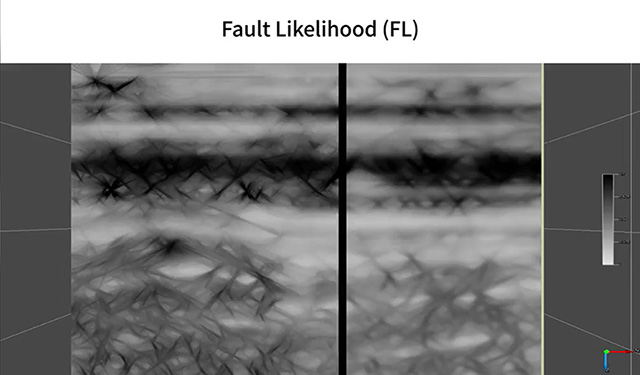Fault Likelihood (FL) and its derivative Thinned Fault Likelihood (TFL) facilitate structural interpretation. Both volumes have three components: Fault Likelihood, Fault Dip and Fault Azimuth and both can be used as input for Automatic Fault plane Extraction (AFE). However, we recommend to use FL as input to AFE.

A problem with AFE (and TFL) is that it may generate a large amount of small fault planes of which many may actually not be real faults. Instead, these features are artifacts created by the algorithm. Fault Likelihood is created by computing the semblance between adjacent trace segments in a discrete number of scans in both dip- and azimuth directions. These scan directions appear as high value ridges in a FL volume that are clearly visible as star-shaped features, especially in no-data zones (water column, blank traces, …)
Here, we show that many of these small events can be removed from FL by applying a localized Velocity Fan filter. This OpendTect filter is a 3D FK filter that smooths the input at every sample position by filtering along velocity lines. As FL has 3 components, you must create three attributes in the OpendTect attribute engine. The attributes must be given exactly these names: “Fault Likelihood”, “Fault Dip” and “Fault Azimuth”. From the name of these components, OpendTect will recognize the output volume to be a Fault Likelihood volume. The output is created by processing the three attributes (in the order: FL, Dip, Azimuth) as a Multi-Attribute Volume, an option under the Processing menu.
The video shows an example of FL and TFL before and after Velocity Fan filtering of the FL volume.